Drone detection
The social and economic impact of a drone posing a security threat is now quite evident to the general public, owing to numerous high profile news stories regarding this subject in recent years. Due to the substantial increase in the number of affordable drones in the consumer market and their regrettable misuse, there is a need for efficient technology to detect drones in airspace.
Traditionally, for target detection and classification, radar systems strongly depend on the radar cross section (RCS) of a target, which is a measure of a target’s ability to reflect radar signals in the direction of the radar receiver. A conventional air surveillance radar system can rely on the RCS of an aircraft for detection, but this may not always provide reliable detection in case of drones which have a small RCS and tend to move slowly and at low altitudes. Even if a dedicated system is built to be sensitive enough to detect a small object like a drone, RCS information alone is not adequate. Birds have a similar physical size to drones and also will fly at similar altitudes and speeds. A reliable drone detection radar system must have the capability to discriminate between drones and birds, or any other moving objects which may be nearby, on or close to the ground.
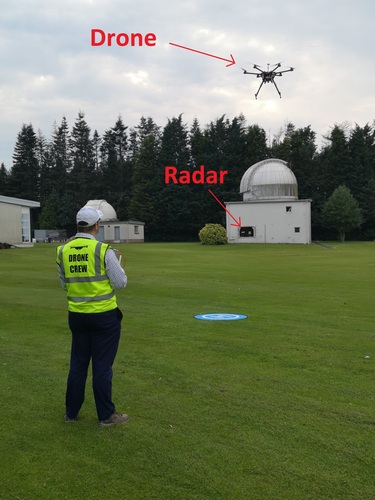
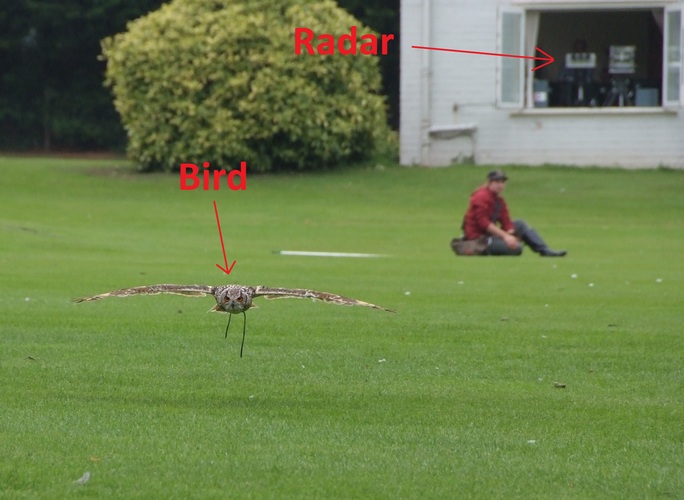
The study of micro-Doppler signatures is hence of great importance in this context. Micro-Doppler is generated due to the micro motion of the various components within a target (e.g. hand and legs motion of human walking, bird wing flapping, propeller blade rotation of a drone etc.). A millimetre-wave radar has the advantage of having better Doppler resolution and sensitivity in a given integration time to enhance micro-Doppler fidelity. Another main advantage is that a millimetre-wave system can be compact, lightweight and portable.
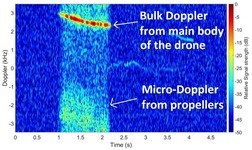
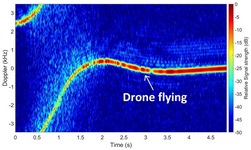
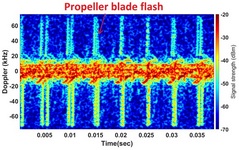
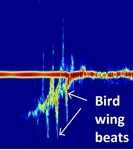
Our Group has been involved in various research projects on drone detection since 2016, focusing on developing technology to detect drones using an effective and affordable millimetre-wave radar system. Samiur Rahman and Duncan Robertson have been involved in the following works related to drone detection-
- Gathering extensive data of commercial drones and birds at 94 GHz using existing radars in the group.
- Designing and building a 24 GHz radar for collecting drone and bird data at lower frequencies.
- Wide-ranging signal processing and data analysis to study the radar signatures of drones and birds at W-band (94 GHz) and K-band (24 GHz).
- Designing and building an E-band radar system tailored for real-time drone detection. Both the radar hardware and the real-time drone classification algorithm have been developed by the group. The technology has been demonstrated to various UK government officials with very positive feedback.
- Designing and building the second version of the real-time drone detection radar system, which operates at K-band to have longer range coverage.
- Experimental field trials for obtaining radar data of drones equipped with threat payloads (liquid spray, heavy payloads, recoil effect mimicking a firearm attached to a drone). Detailed analysis of the data has been done to understand the distinct radar signatures of drones in these situations.
Project funding-
- Science & Technology Facilities Council (STFC), ST/N006569/1, 2016 – 2018.
- US Army Research lab, W911NF-19-2-0075, 2018 – 2019.
- PhD studentship for Matt Moore, EPSRC / QinetiQ, 2020-2024.